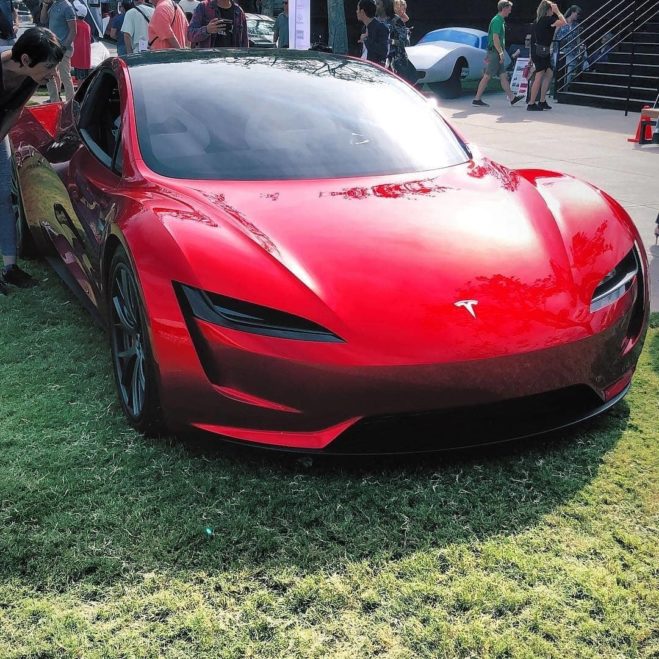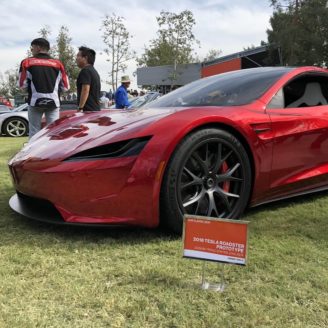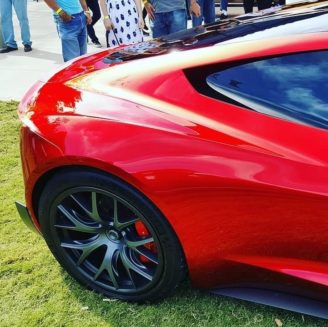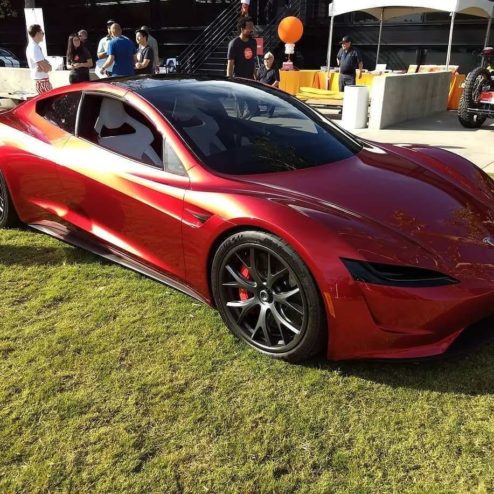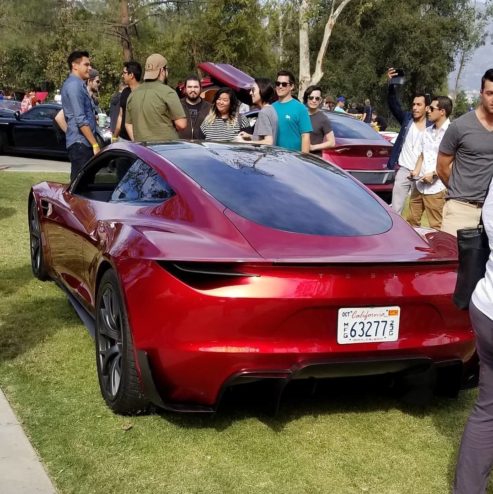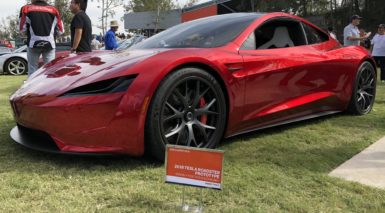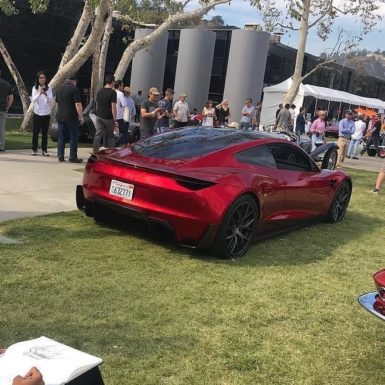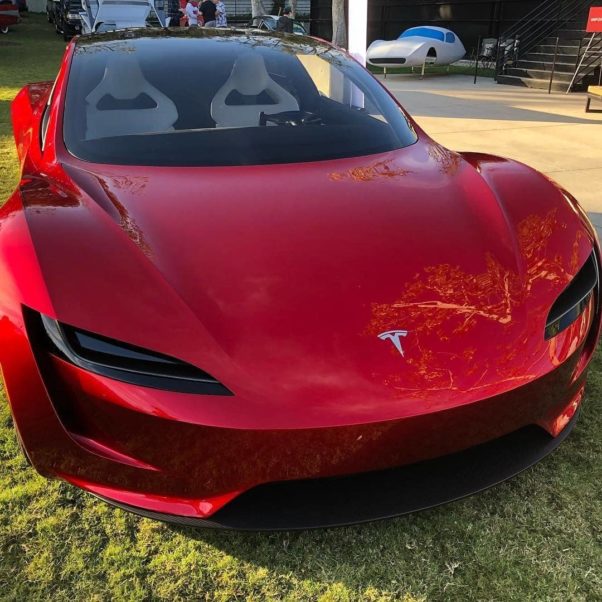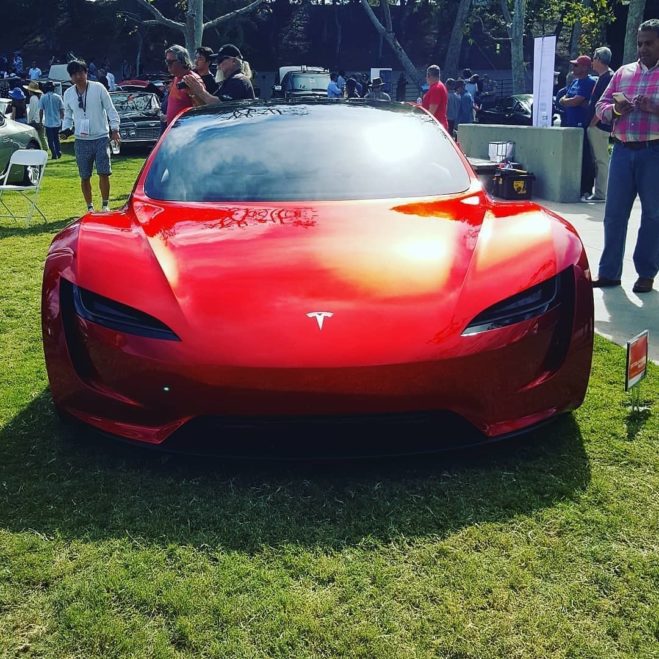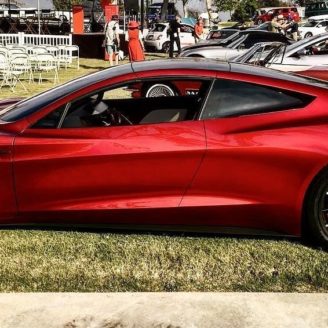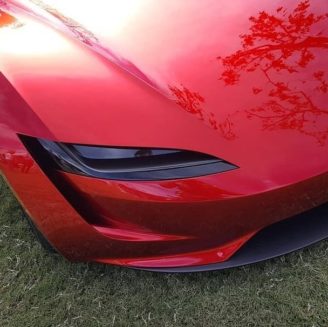
In the world of supercars, there are vehicles that always warrant a second look — cars that are so attractive and iconic; they end up lining the bedroom walls of enthusiasts in their formative years. Decades ago, that car was the Lamborghini Countach and the Ferrari Testarossa. Today, amidst the advent of the electric era, that car is the next-generation Tesla Roadster — a vehicle that Elon Musk aptly dubbed as a “hardcore smackdown” to fossil fuel-powered automobiles.
Tesla’s next-gen Roadster prototype made a rare appearance in Los Angeles over the weekend at the ArtCenter College of Design’s Car Classic 2018 exhibition. The weekend event celebrated the 70th anniversary of the College’s Transportation Design program, which has produced some of the world’s most iconic designers, including Tesla Chief Designer Franz von Holzhausen and Tesla’s Director of Product Design, Javier Verdura. Both are alumni of the Southern California-based ArtCenter who became friends in the early 90s while attending the school’s design program.
Several high-profile vehicles were showcased alongside a gorgeous red Tesla next-generation Roadster at Sunday’s annual car classic, including Henrik Fisker’s EMotion all-electric sports car, a Michelle Christensen-designed Acura NSX, and a Sasha Selipanov/Chris Ha-designed Genesis Essentia concept car.
Attendees of the exhibition took to social media to share stunning images of Tesla’s upcoming all-electric supercar.
The next-generation Tesla Roadster at Car Classic 2018. [Credit: Dave Kunz, dom_schulz, and t35l_4/Instagram]
Apart from the operational prototype in red, Tesla has also unveiled two design shells for the vehicle — a midnight silver/gray unit that was showcased at Tesla’s Semi truck unveiling event, and a stunning white Roadster that was unveiled at the 2018 Annual Shareholder Meeting. The white Roadster design shell was eventually brought over to the Grand Basel Car Show in Switzerland, where it attracted a notable amount of attention from attendees as well.
Earlier this year, Elon Musk noted on Twitter that the intent behind the creation of the next-generation Tesla Roadster is to “beat gas sports cars on every performance metric by far, no exceptions, thus transferring the “halo crown” effect gas cars have as the top speed leaders over to pure electric.” Tesla’s electric cars today like the Model S P100D and Model X P100D are monsters on the quarter-mile, but when it comes to races over longer distances, they eventually get overtaken by fossil fuel-powered vehicles. The company aims to address this with the upcoming all-electric supercar.
The next-generation Tesla Roadster at Car Classic 2018. [Credit: dgaultiere/Reddit, Dave Kunz, dom_schulz, Xavier Carr, and zolinator/Instagram]
The specs of the next-generation Roadster are remarkable, with its 0-60 mph time of 1.9 seconds, its 0-100 mph time of 4.2 seconds, its top speed of more than 250 mph, its quarter-mile time of 8.9 seconds, and a range of 620 miles per charge thanks to its 200 kWh battery pack. In true Tesla form, the Roadster is poised to be a disruptor in the supercar industry, delivering its knockout performance with a price tag starting at $200,000. This makes it more affordable than mid-level supercars like the McLaren 720S and the Ferrari 812 Superfast (both of which are priced in the ~$300,000 range), despite boasting performance figures that rival (or even exceed) million-dollar “halo cars” like the McLaren P1 and the Ferrari LaFerrari.
What’s even more impressive is that the specs of the all-electric supercar are true for the vehicle’s base version. Earlier this year, Elon Musk announced on Twitter that a “SpaceX package” for the Tesla Roadster, which would use literal rocket thrusters (small Composite Overwrapped Pressure Vessels [COPVs]) from SpaceX, would allow the vehicle to fly “short hops.” In this iteration, Musk noted that the Roadster would lose its 2+2 seating capability, but it would give the all-electric supercar the capability to go even faster. Tesla aims to release the next-generation Roadster sometime in 2020, with test drives estimated to begin towards the end of 2019.

Top Rated Comments (view all)
Discuss: News
Top rated
Newest

